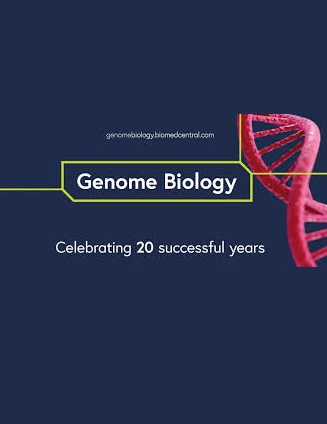Medieval genomes from eastern Iberia illuminate the role of Morisco mass deportations in dismantling a long-standing genetic bridge with North Africa
IF 10.1
1区 生物学
Q1 BIOTECHNOLOGY & APPLIED MICROBIOLOGY
引用次数: 0
Abstract
The Islamic influence on the Iberian Peninsula left an enduring cultural and linguistic legacy. However, the demographic impact is less well understood. This study aims to explore the dynamics of gene flow and population structure in eastern Iberia from the early to late medieval period through ancient DNA. Our comprehensive genomic analysis uncovers gene flow from various Mediterranean regions into Iberia before the Islamic period, supporting a pre-existing pan-Mediterranean homogenization phenomenon during the Roman Empire. North African ancestry is present but sporadic in late antiquity genomes but becomes consolidated during the Islamic period. We uncover one of the earliest dated Islamic burials in Spain, which shows high levels of consanguinity. For the first time, we also demonstrate the persistence of North African ancestry in a Christian cemetery until the seventeenth century, in addition to evidence of slave trafficking from North Africa. This study reveals the complex interaction between political events and cultural shifts that influenced the population of eastern Iberia. It highlights the existence of a slave trade, underscores the low impact of the Reconquista in the genetic landscape, and shows the lasting impact of post-medieval events, such as the Expulsion of the Moriscos in 1609 CE, on the region’s genetic and cultural landscape, through mass population displacement and replacement.来自伊比利亚东部的中世纪基因组阐明了摩洛哥大规模驱逐在拆除与北非长期存在的基因桥梁中的作用
伊斯兰教对伊比利亚半岛的影响留下了持久的文化和语言遗产。然而,对人口的影响还不太了解。本研究旨在通过古DNA探索中世纪早期至晚期伊比利亚东部地区的基因流动和种群结构动态。我们全面的基因组分析揭示了在伊斯兰时期之前,基因从地中海各个地区流入伊比利亚,支持罗马帝国时期存在的泛地中海同质化现象。北非祖先是存在的,但在古代晚期的基因组中是零星的,但在伊斯兰时期得到巩固。我们在西班牙发现了最早的伊斯兰墓葬之一,显示出高度的血缘关系。除了从北非贩运奴隶的证据外,我们还首次在基督教墓地中展示了北非祖先的持久性,直到17世纪。这项研究揭示了影响伊比利亚东部人口的政治事件和文化转变之间复杂的相互作用。它突出了奴隶贸易的存在,强调了收复失地运动对遗传景观的影响较小,并显示了中世纪后的事件,如1609年驱逐摩里斯科人,通过大规模人口流离失所和更替对该地区遗传和文化景观的持久影响。
本文章由计算机程序翻译,如有差异,请以英文原文为准。
求助全文
约1分钟内获得全文
求助全文
来源期刊

Genome Biology
Biochemistry, Genetics and Molecular Biology-Genetics
CiteScore
21.00
自引率
3.30%
发文量
241
审稿时长
2 months
期刊介绍:
Genome Biology stands as a premier platform for exceptional research across all domains of biology and biomedicine, explored through a genomic and post-genomic lens.
With an impressive impact factor of 12.3 (2022),* the journal secures its position as the 3rd-ranked research journal in the Genetics and Heredity category and the 2nd-ranked research journal in the Biotechnology and Applied Microbiology category by Thomson Reuters. Notably, Genome Biology holds the distinction of being the highest-ranked open-access journal in this category.
Our dedicated team of highly trained in-house Editors collaborates closely with our esteemed Editorial Board of international experts, ensuring the journal remains on the forefront of scientific advances and community standards. Regular engagement with researchers at conferences and institute visits underscores our commitment to staying abreast of the latest developments in the field.
 求助内容:
求助内容: 应助结果提醒方式:
应助结果提醒方式:


